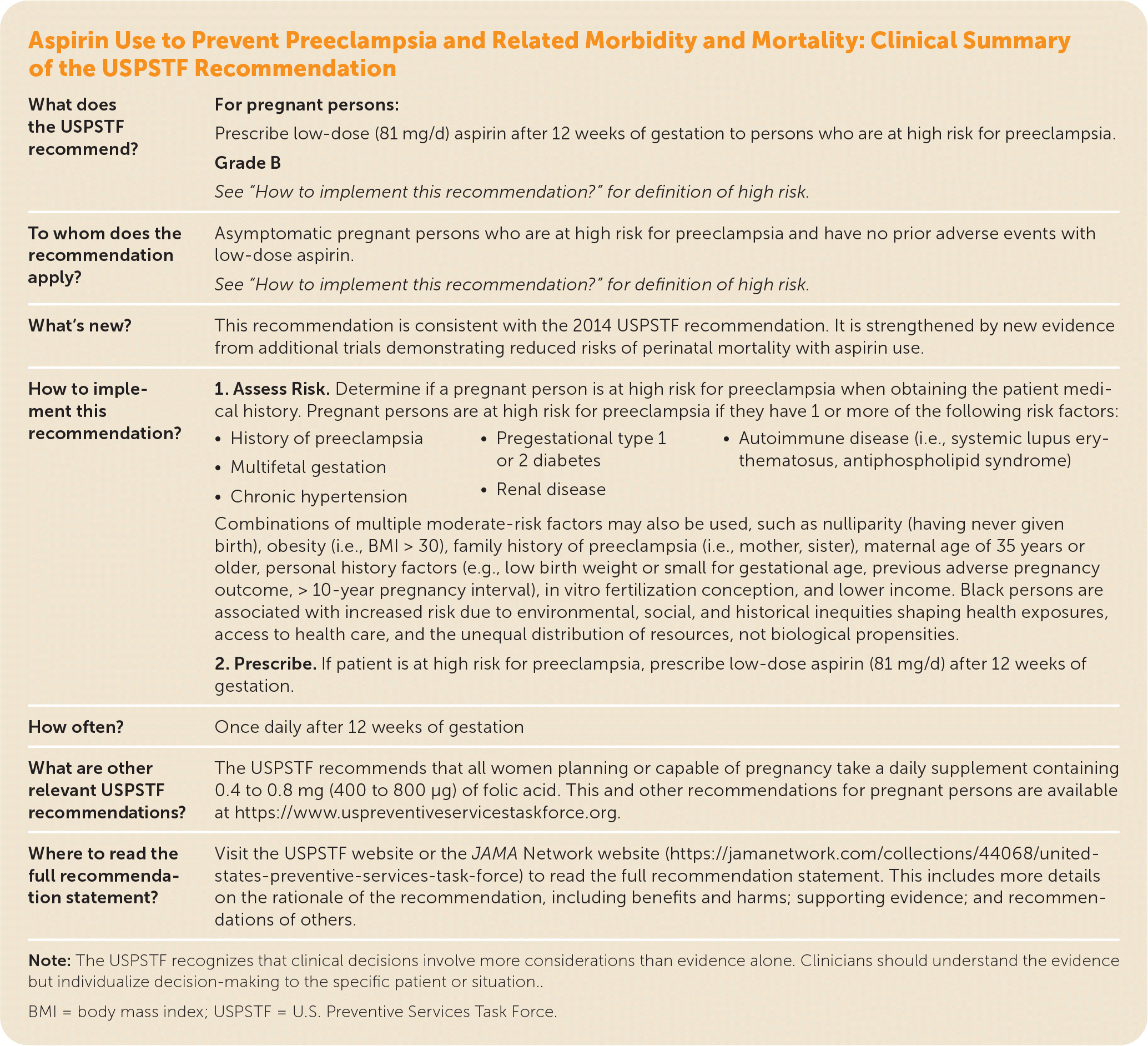
Am Fam Physician. 2022;105(4):online
As published by the USPSTF.

| What does the USPSTF recommend? | For pregnant persons: Prescribe low-dose (81 mg/d) aspirin after 12 weeks of gestation to persons who are at high risk for preeclampsia. Grade B See “How to implement this recommendation?” for definition of high risk. | ||
| To whom does the recommendation apply? | Asymptomatic pregnant persons who are at high risk for preeclampsia and have no prior adverse events with low-dose aspirin. See “How to implement this recommendation?” for definition of high risk. | ||
| What’s new? | This recommendation is consistent with the 2014 USPSTF recommendation. It is strengthened by new evidence from additional trials demonstrating reduced risks of perinatal mortality with aspirin use. | ||
| How to implement this recommendation? | 1. Assess Risk. Determine if a pregnant person is at high risk for preeclampsia when obtaining the patient medical history. Pregnant persons are at high risk for preeclampsia if they have 1 or more of the following risk factors: | ||
| • History of preeclampsia • Multifetal gestation • Chronic hypertension • Pregestational type 1 or 2 diabetes • Renal disease • Autoimmune disease (i.e., systemic lupus erythematosus, antiphospholipid syndrome) | |||
| Combinations of multiple moderate-risk factors may also be used, such as nulliparity (having never given birth), obesity (i.e., BMI > 30), family history of preeclampsia (i.e., mother, sister), maternal age of 35 years or older, personal history factors (e.g., low birth weight or small for gestational age, previous adverse pregnancy outcome, > 10-year pregnancy interval), in vitro fertilization conception, and lower income. Black persons are associated with increased risk due to environmental, social, and historical inequities shaping health exposures, access to health care, and the unequal distribution of resources, not biological propensities. 2. Prescribe. If patient is at high risk for preeclampsia, prescribe low-dose aspirin (81 mg/d) after 12 weeks of gestation. | |||
| How often? | Once daily after 12 weeks of gestation | ||
| What are other relevant USPSTF recommendations? | The USPSTF recommends that all women planning or capable of pregnancy take a daily supplement containing 0.4 to 0.8 mg (400 to 800 μg) of folic acid. This and other recommendations for pregnant persons are available at https://www.uspreventiveservicestaskforce.org. | ||
| Where to read the full recommendation statement? | Visit the USPSTF website or the JAMA Network website (https://jamanetwork.com/collections/44068/united-states-preventive-services-task-force) to read the full recommendation statement. This includes more details on the rationale of the recommendation, including benefits and harms; supporting evidence; and recommendations of others. | ||
